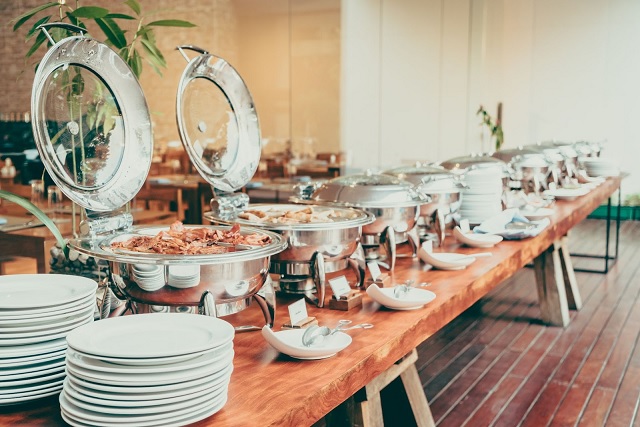Crafting a cheeseboard is an art form that blends aesthetics and gastronomy. Among the options, a blue marble cheeseboard stands out as a visually captivating choice.
This guide will take you through the steps to achieve a picture masterpiece when designing a blue marble cheeseboard that not only pleases the taste buds but also serves as a stunning centerpiece.
The Canvas: Selecting the Ideal Blue Marble Cheese
The foundation of any cheeseboard is, of course, the cheese itself. When it comes to creating a blue marble cheeseboard, the choice of cheese plays a role in terms of flavor and appearance.
1. Varieties of Blue Marble Cheese
Begin by choosing from types of blue marble cheeses. Consider options such, as Blue Stilton, Gorgonzola Piccante, or even a creamy blue marble Jack. Each offers its flavor profile and beautifully marbled appearance.
2. Complementary Cheeses
To add depth and variety, include cheeses. Opt for selections like cheddar nutty Gruyère or creamy Brie. These choices will help balance out the boldness of the blue marble cheese.
The Artful Arrangement: Creating Visual Harmony
Arranging the components on your cheeseboard is where true artistry comes into play. It’s about crafting an appealing composition that entices and excites.
1. Symmetry and Asymmetry
Experiment with both symmetry and asymmetry when arranging the cheeses. Strive for a presentation while also allowing some items to naturally spill over, creating an inviting look.
2. Texture and Color Variations
Add diversity to the overall texture by including accompaniments like crispy baguette slices, crunchy nuts and smooth figs. Additionally, incorporate fruits such as grapes and berries to introduce a burst of color.
Selecting Complementary Accompaniments: The Palette
Accompaniments play a role in completing the masterpiece. They offer contrasting flavors and textures that enhance the experience.
Crackers and Breads
Opt for an assortment of crackers and breads. Consider options like water crackers, whole-grain breadsticks or sliced baguette. These serve as the canvas on which the cheese and toppings can truly shine.
Nuts and Seeds
Offer a selection of nuts and seeds. Almonds, walnuts or pumpkin seeds provide a crunch while perfectly complementing the creamy notes of the cheese.
Fruits and Vegetables
Integrate a mix of well-dried fruits along with sliced vegetables. Figs, apples or dried apricots bring sweetness to the mix, while cucumber or radish slices add crispness.
The Final Touch of Garnishes and Condiments
Adding the touches to your blue marble cheeseboard adds depth and contrast, transforming it into a work of art.
1. Sweet Additions
Enhance the sweetness of cheese by drizzling honey over a wedge. You can also add fig or apricot jams for a flavor that complements the taste.
2. Fresh Herbs
Sprinkle herbs, like thyme, rosemary or basil to bring a burst of freshness. Not only do they enhance the appeal but they also offer flavors that perfectly complement the cheeses.
3. Briny Delights
Introduce elements such as olives, cornichons or pickled onions. Their sharp and tangy flavors beautifully contrast with the richness of the cheeses.
Presentation Matters: Choosing the Perfect Serving Dish
Selecting the vessel for your blue marble cheeseboard is crucial for a presentation.
1. Rustic Wooden. Sleek Slate Board
Opt for a wooden platter or a sleek slate board as the backdrop for your masterpiece. These materials provide a canvas that allows both colors and textures of cheeses and accompaniments to shine.
2. Individual Cheese Knives and Spoons
Ensure each type of cheese and accompaniment has its individual cheese knife and spoon available. This way, guests can easily serve themselves without mixing flavors.
The Experience: Sharing and Enjoying
In the end, a blue marble cheeseboard is more than about how it looks. It’s about creating an experience that we can all enjoy together, savoring the flavors side by side.
1. Encourage Tasting and Exploration
Invite your guests to explore and taste the cheeses, accompaniments and pairings. Offer descriptions or tasting notes to guide their palates.
2. Pair with Wine and Beverages
Match the blue marble cheeseboard with wines or beverages that complement it well. A robust red wine like Cabernet Sauvignon enhances the richness of cheese, while a refreshing white wine like Sauvignon Blanc balances out its textures.
Conclusion
Designing a blue marble cheeseboard is an artistic endeavor that combines culinary expertise with creative expression. By selecting cheeses, accompaniments and arranging them thoughtfully, you can create a masterpiece that not only delights your taste buds but also captivates your eyes.
Remember, it’s more than a cheeseboard; it’s a canvas of flavors and textures – an edible work of art to be cherished


